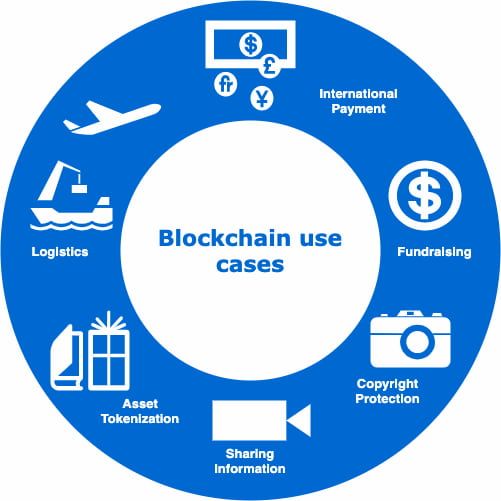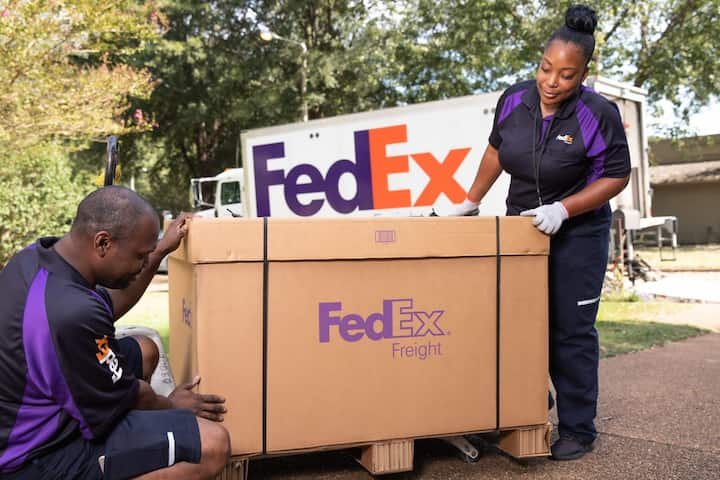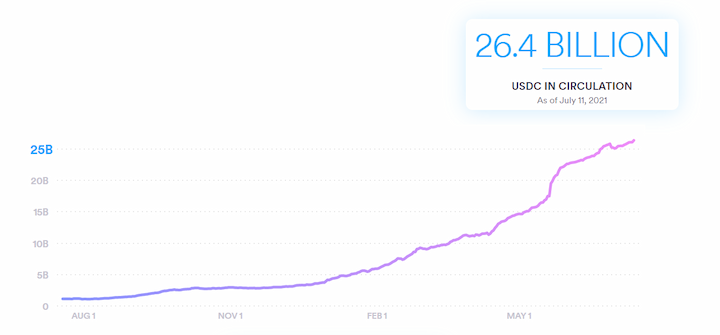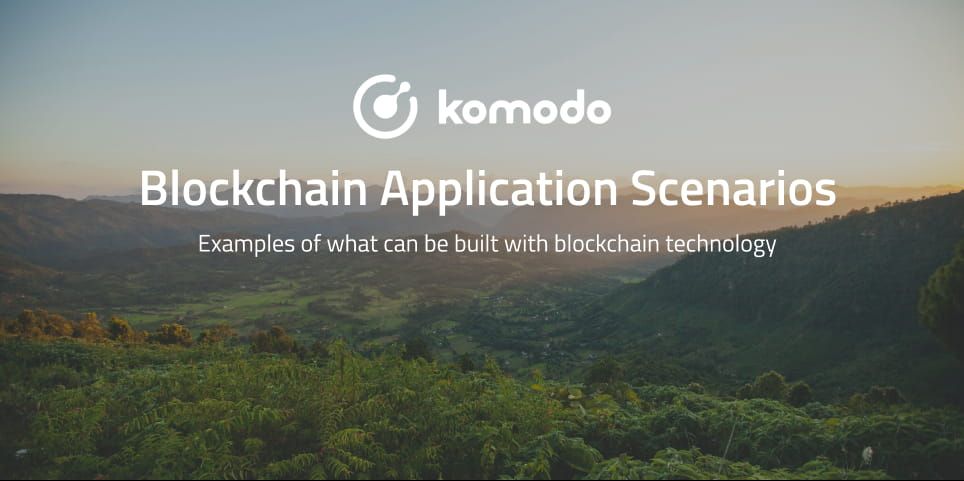Blockchain applications have many use cases in sectors that deal with the tokenization of assets. The interaction with a blockchain creates transactions, and blockchain offers a validation process. This interaction does not limit blockchain applications to financial use.
Many industries are capitalizing on blockchain features. There are also entirely new industries developing. The IT and application development industry are currently estimated to be worth $3.6 trillion. The blockchain industry is growing rapidly, at about 517% per annum, and has the potential to increase the world’s economy by $1.7 trillion by 2030.
What Is A Blockchain Application?
To become a blockchain developer, it’s important to understand the underlying technology. Blockchain technology is a system made of components optimized for transactions by using a distributed ledger for the exchange of property. Verification of transactions is made possible through decentralization. Decentralization is the defining architectural aspect of most blockchains. A blockchain application is a technology or use case that is made possible via a blockchain.
Main Features of Blockchain

Decentralization
A blockchain is decentralized, meaning there is no central governance or dependency on a single data center. In a centralized system, if something happened to the data center or the primary ledger, the whole network would be compromised. This would have serious business implications and could result in financial loss.
Security
A business might be interested in building an application on top of a blockchain because it requires a validation process. Transactions are validated through blockchain’s inherent security features. Any information added to the blockchain cannot be reversed. It is immutable because there is no possibility of changing transactional information. In a decentralized network, a single node cannot control the process, all the information written to the blockchain is collectively maintained.
Tokenization
To write new information to a blockchain, blockchain consensus is reached by the majority of nodes through a series of confirmations. All transactional information is distributed among these workers. Rewards in the form of cryptocurrency are offered for collectively maintaining the protocol. Tokens can also be offered as a representation of assets not necessarily associated with the blockchain. These can be generated through the blockchain process.
Encryption
Blockchain offers protection for users, or potential customers by ensuring their sensitive data is encrypted in the process. While the contents of a decentralized blockchain are visible to anyone in the network, personal information related to a user is protected. This creates many benefits for blockchain applications in various public sectors.
Transparency
Blockchain can improve industries that are lacking in transparency. The activity on the blockchain is publicly visible, permanently stored, and accessible for audit. Transparency is a feature that can cut costs, such as legal fees via the elimination of brokers. A blockchain application developer might want to build a client application that interacts with the blockchain ledger to return specific information that may be useful to a business, such as payments and timestamps related to payments.
Blockchain Application Case Studies

Sharing of Information
Project: U.S Election Race Calls
Companies: Associated Press (AP), Chainlink, USA
Industry: News, Media
The Associated Press (AP) has been announcing US election results since 1848. AP announced in 2020 that it will create a blockchain that will permanently store election data. The data will be collected from an oracle. The oracle will be selected by the Chainlink project, and then written to a smart contract to permanently write the result to a blockchain so that the result on the blockchain can be reviewed without being altered.
Review
Anything that is added to the blockchain is permanently stored. The use of blockchain for this purpose is controversial. Blockchains can verify numerical data without fault, although it is not optimized to process literal information because there can be no consensus about opinion. There is a risk in potentially publicizing information that cannot be verified because there is a human element involved in the collection of data.
Copyright Protection
Project: The News Provenance Project
Company: New York Times (NYT), IBM Garage, USA
Industry: News, Media
The NYT partnered with IBM Garage, a business development company to use blockchain to share information on a platform for news organizations and journalists. The News Provenance Projects is developed by a research group of the NYT. The blockchain will be used to verify the source of photos. The news organization stores information about photos captured by journalists with relevant data associated with the origin of the photos including the publisher, photographer, location, and date. The company aims to eliminate misinformation, defined as news reported by individuals who have the intention of misleading the public.
Review
Photo provenance is a good application of blockchain because it is visuals minus context. Blockchain solutions are good for general information such as capturing photos, without context and subjective opinion.
Assets Tokenization
Project: VeVe app
Company: ECOMI, Singapore
Industry: Digital Collectibles
VeVe is a platform is both a marketplace and digital showroom of digital work including film, animation, digital art, and collectible items. The marketplace is available as a standalone app. Every item is important to augmented reality (AR) and can be marketed from this AR. Items can be traded for OMI tokens, which can be traded on some decentralized exchanges.
Review
VeVe is a successful project with over 300,000 users. It offers a secure wallet and benefits both creators and collectors. VeVe plans to launch a metaverse called the VeVeVerse which will offer a world with a social platform alongside collectible items.
Traceability in Logistics
Project: FedEx Dispute Resolution
Company: FedEx, Hyperledger, BiTA (Blockchain in Transport Alliance), USA
Industry: News, Media
FedEx offers a courier service, dominating a quarter of the industry’s market. FedEx announced that it will explore blockchain to improve the traceability of shipments. Its dispute resolution project aims to collect data that can be used in court as evidence for or against disputes that realize from its services. It also seeks to digitize information exchanged in the transportation of goods. This will allow verification of documentation and identify counterfeit certificates.
Review
This is a good implementation of blockchain because it shows that shared information obtained from the blockchain can be used as proof. This project is still in the PoC phase, it was piloted in 2018, and once developed, aims to be an open-source project.

Fundraising
Project: KickICO Platform
Platform: Ethereum Blockchain Platform
Industry: Crowdfunding
KickICO is a platform for startups to raise funding for their projects, as well as for potential investors to find new projects. Investors receive tokens as their reward for contribution. They can make contributions in cryptocurrency or fiat. The tokens issued are a type of security token. Project developers pay in KickCoins to the platform to host their projects. Tokens earned can be traded on decentralized exchanges.
Review
Many blockchain startup projects fail. This project is a good initiative because it offers investors guaranteed protection. The reward tokens earned are tradeable on exchanges regardless of whether the project succeeds or not.
International Payment
Project: Circle - USDC
Platform: Ethereum Blockchain Platform
Industry: Business & Finance
Circle has created a digital stable token called USDC or USD coin as well as a digital wallet to store USDC. USDC is pegged to the dollar rate and settles the transfer in a relatively short time without price volatility. The platform allows a business to accept payments in fiat currency from banks, debit, credit card, or wire services, and converts and stores this as USDC.
Review
It is a novel technology and disruptive to traditional financial technology because it provides faster, cheaper settlements. It makes efficient financial services accessible to businesses. However, many finance projects do not account for unbanked populations as a customer, and there is still a need for a bridge here. Blockchain applications are making much progress in this area, and there is a lot of growth potential in this sector.

First Steps - How To Build A Blockchain Application
In blockchain application development, applications are built on top of a blockchain protocol, such as the Ethereum blockchain platform. Blockchain apps or smart contracts can be built from code using blockchain programming languages. Smart contracts are a set of rules and are executed when the conditions are fulfilled. They are automated and do not require intervention to execute.
During the proof-of-concept phase, developers test the functionality of the app. It can iron out issues such as the initiation of data in the blockchain process. If information is not initiated on the blockchain, a block is not created. The process of verification would then be initiated from data from an external source. The network would have to rely on and trust an oracle. The sources of the information cannot legitimately be verified because the input data is not from a user in the network.
Having to trust the accuracy of information from a third-party source creates what is known as the problem of the oracle. A solution to the oracle problem may be additional layers to the blockchain app that can assess whether the source of information is accurate. This would require upgrades to the blockchain app and redeployment. It's also always a good idea to look at solutions to enhance blockchain security.
Conclusion
While there are benefits to building a blockchain app, there are also downsides. Some blockchain projects are attempting to capitalize on the immutability aspect of blockchain. This feature is however not an isolated feature of blockchain. As a result, blockchain’s verification system can be used simply to publicize information. A media company may assume that information will be trusted due to the blockchain’s security reputation. In other cases, blockchain may offer a solution to unresolved problems in global money remittance. In all cases, blockchain features offer faster, cheaper, and efficient services than traditional technologies.
📧Komodo Newsletter
If you'd like to learn more about blockchain technology and keep up with Komodo's progress, subscribe to our newsletter. Begin your blockchain journey with Komodo today.

